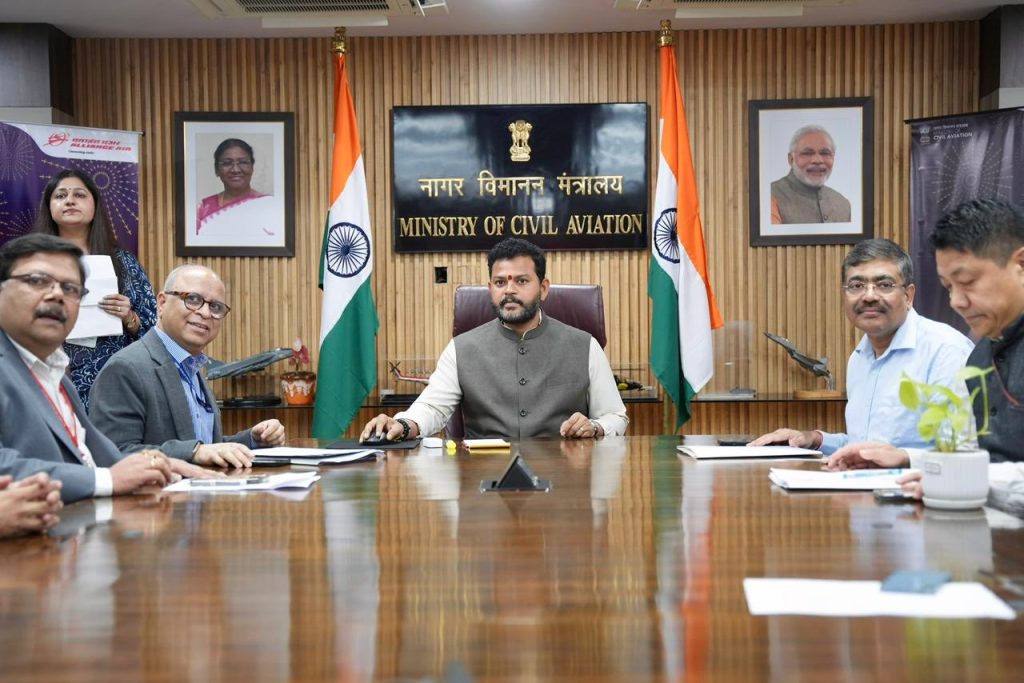Civil Aviation Minister Launches ‘Fare Se Fursat’ to Curb Fluctuating Airfares

“Fare Se Fursat” Initiative: A Step Toward Affordable and Predictable Air Travel in India
Introduction
Union Minister for Civil Aviation Rammohan Naidu Kinjarapu launched the “Fare Se Fursat” initiative — a pioneering effort to stabilise airfares and enhance affordability in India’s domestic aviation sector. Introduced by the government-owned regional carrier Alliance Air, the scheme aims to free passengers from the uncertainty and stress of constantly fluctuating ticket prices.This initiative marks an innovative policy experiment aligned with India’s broader goal of democratising air travel and promoting inclusive connectivity under the UDAN (Ude Desh ka Aam Nagrik) scheme.
I. Key Features of the “Fare Se Fursat” Scheme
- Fixed Fare Mechanism:
The scheme introduces a single, static fare structure that remains constant, irrespective of booking date or demand fluctuations. This applies even to same-day travel bookings. - Pilot Implementation:
The initiative will be run on a pilot basis until the end of 2025, across select Alliance Air routes, to evaluate its operational feasibility, passenger response, and financial sustainability. - Government Support:
The Ministry of Civil Aviation has positioned the scheme as a complementary mechanism to UDAN, aimed at promoting affordable regional air connectivity and supporting Tier-2 and Tier-3 cities. - Target Demographic:
The scheme primarily caters to middle-class, lower-middle-class, and neo-middle-class passengers, who often face unpredictability in airfare pricing due to demand-driven algorithms.
II. Context and Policy Rationale
The Indian aviation sector, one of the fastest-growing in the world, faces significant fare volatility driven by fuel prices, seasonal demand, and real-time pricing algorithms. Such fluctuations often deter last-minute travellers and burden regional passengers.“Fare Se Fursat” seeks to address these challenges through a predictable pricing framework, improving passenger confidence and encouraging greater utilisation of regional air services.The initiative aligns with the National Civil Aviation Policy (NCAP) and the UDAN mission, which together aim to:
- Enhance regional air connectivity.
- Make air travel affordable to wider socio-economic groups.
- Strengthen last-mile air transport infrastructure.
III. Strategic and Economic Implications
- Consumer Confidence and Predictability:
Fixed pricing will improve fare transparency, allowing passengers to plan travel without financial anxiety or last-minute price surges. - Boost to Regional Connectivity:
By stabilising fares, the scheme could increase passenger traffic on under-utilised routes, supporting the viability of regional airports developed under RCS-UDAN. - Operational Viability for Alliance Air:
As a public carrier, Alliance Air serves remote and low-demand sectors. Stable fare structures may ensure steady passenger flow and predictable revenue streams, offsetting operational challenges. - Policy Experimentation in Aviation Pricing:
The initiative represents a policy innovation—testing the balance between market forces and consumer welfare within the liberalised aviation framework. If successful, similar models could be replicated by private airlines. - Alignment with “Ease of Flying” Vision:
The scheme supports the government’s emphasis on Ease of Living and Ease of Doing Business, by reducing unpredictability in domestic travel costs.
IV. Challenges and Considerations
- Financial Sustainability:
Fixed fares may pose profitability challenges for airlines during peak seasons or on routes with high operational costs. - Competition and Market Response:
The scheme could prompt private carriers to adjust pricing models, but may also lead to concerns over market distortion if implemented widely without regulatory guidelines. - Infrastructure and Capacity Constraints:
For the scheme to succeed, adequate airport and ground-handling capacity must be ensured across regional routes. - Evaluation Metrics:
Success will depend on passenger feedback, load factors, and operational cost recovery during the pilot phase.
V. Government’s Broader Vision
Minister Rammohan Naidu highlighted that “Fare Se Fursat” reflects Prime Minister Narendra Modi’s vision of making air travel accessible to every Indian. Underlining the success of the UDAN scheme, he noted that India’s aviation network has significantly expanded into semi-urban regions, ensuring that “Hawai Chappal wale bhi hawai yatra kar sakein” (those who wear slippers can also travel by air).The Minister also emphasised that predictability in fares complements other ongoing reforms in the aviation sector, including airport modernisation, regional route expansion, and digital passenger facilitation systems.
VII. Analytical Perspective
“Fare Se Fursat” is emblematic of policy innovation through state-led experimentation. By addressing fare volatility, the government is testing a consumer-centric approach in a sector traditionally governed by dynamic pricing.While its long-term viability depends on operational economics, the initiative symbolises India’s shift towards inclusive aviation growth — where regional connectivity, affordability, and predictability coexist within a competitive market structure.If successful, it could emerge as a model for pricing stability in essential public transport sectors, reinforcing the idea that air travel is no longer a luxury but a necessary component of equitable mobility and economic integration.
VIII. Conclusion
The “Fare Se Fursat” scheme represents a strategic step in India’s civil aviation reforms — balancing accessibility with economic pragmatism. By introducing a fixed fare model, the government is not only addressing immediate consumer concerns but also reinforcing the broader policy goal of “Sabka Safar, Sabka Vikas” — making air travel predictable, affordable, and inclusive.Its success will depend on effective implementation, operational efficiency, and adaptability to diverse market conditions — elements that will ultimately determine whether India’s skies can truly become open and equitable for all.
Updated - October 13, 2025 9:39 PM | News On Air